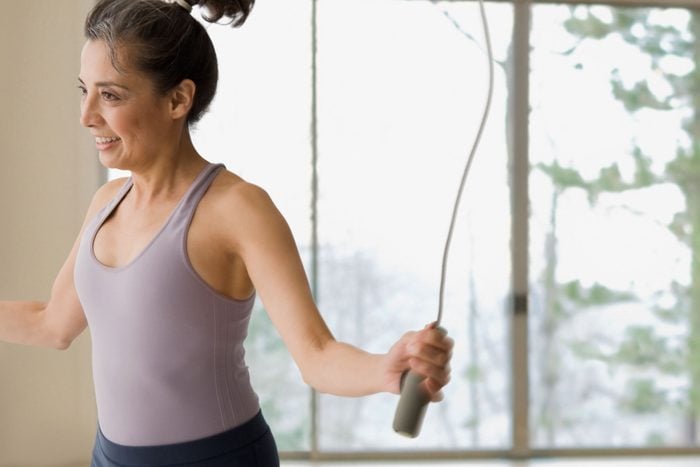
About 10 million Americans over age 50 have osteoporosis—and another 43 million have low bone mass, putting them at an increased risk for developing the disease. According to research published in PLOS One, most people have a broad understanding of osteoporosis: It’s a disease that weakens your bones, making them more vulnerable to fractures or breaks. But the researchers found that beyond that, there are many misconceptions about osteoporosis, particularly that people often believe it’s a normal part of the aging process and there’s not much you can do to prevent or treat the condition.
“Too often, we think about bone as being as strong as it’s going to be in our prime—and the only direction it can go is down as we age, which is not true,” says Karl Burris, PT, DPT, a board-certified orthopedic clinical specialist at Live Life Physiotherapy. He explains that there are many factors to maintaining great bone health, like having a nutrient-dense diet and addressing hormone imbalances (namely, lower levels of estrogen). However, placing strain on the bone through the use of our muscles and gravity—which we call exercise—is imperative to keep our bones in great health.
This Gentle Exercise Is Proven to Help Prevent Falls (and Breaks)
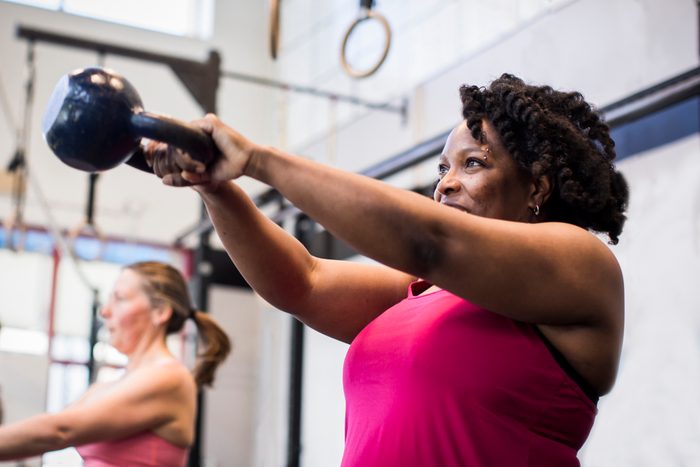
How does exercise prevent osteoporosis?
“The most important thing to keep in mind when discussing bone is that, like other connective tissue like skin and muscle, it’s a living organism that constantly goes through remodeling—old bone is digested, and new bone is formed,” Dr. Burris explains. He references a medical theory called Wolff’s Law that says our bones adapt and strengthen in response to the stress we put them through.
“Think of it like this: Someone with a spinal cord injury is at a higher risk for osteoporosis,” he says, because they are limited in weight-bearing for years after an injury. “So yes, something as routine as getting up and walking through your normal day is helping to keep your bones strong,” he explains.
But as our body systems change (menopause is a big one, he says), the body has a harder time keeping up with maintaining bone density, coupled with increasingly sedentary lifestyles in older years. “This makes it even more important to increase the load through your bones with exercise to assist with bone formation.”
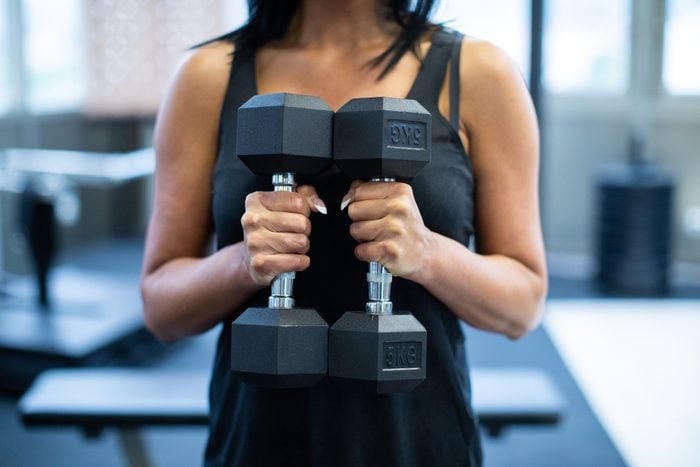
What are the best exercises for osteoporosis?
When considering the best exercises to prevent, treat, and reverse osteoporosis, it’s about aiming for the highest load your muscles and bones can safely tolerate. There’s this fear that exercise will cause injury in older adult populations especially, he says, but “we are seeing programs with people well into their nineties lifting a ton of weight and jumping over barbells.”
Still, he emphasizes that these people didn’t just walk into a gym and get going without any guidance. If you’re not experienced in exercise or are concerned about injury, work with a professional to progressively and appropriately load bones. Also, speak with your licensed healthcare professional first.
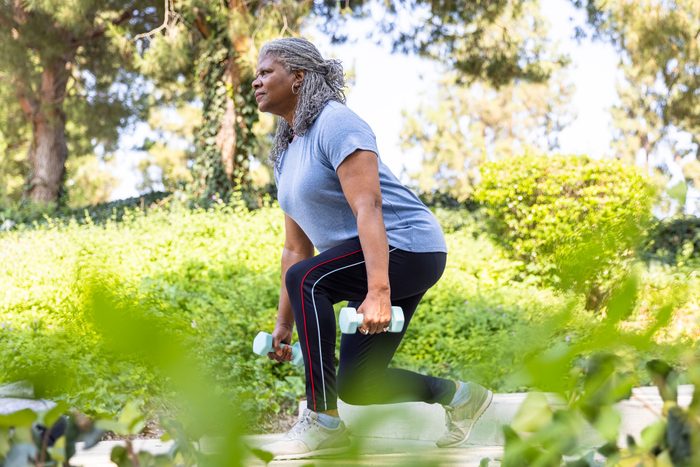
Progressive resistance training
Whether you’re weight-lifting or using exercise bands, resistance training exercises that target large muscle groups—think: Squats, lunges, bench presses, seated rows, pull-downs, and deadlifts—increase bone density by adding stress to the bones and increasing muscle strength.
The key is to not just go through the motions but aim for “high-intensity loads that are progressively increased over time,” Dr. Burris says. This means you’re able to complete two to three sets of eight to 12 repetitions, using about 70% to 85% of your max strength. While it’s OK
(and recommended) to start small, especially if you’re new to weightlifting, “it is very important to achieve adequate load to make desired changes at the level of the bone, as well as progressing the load to continue the bone density gains.”
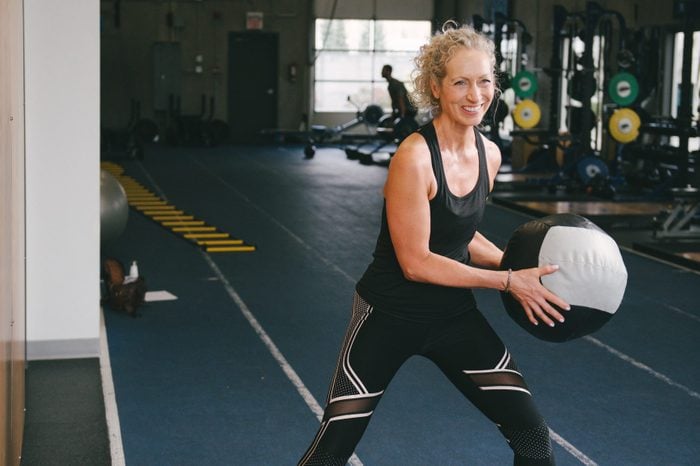
High-velocity power training
“Power is defined by two variables: load and speed,” Dr. Burris explains. “Power can help to provide increased load and stress through our skeletal system—and has other benefits such as faster reactions when we lose our balance.” Examples of these sorts of exercises include power cleans, snatches, kettlebell swings, medicine ball tosses, and standing long jumps.
Again, if you’re unfamiliar with these types of exercises, make sure to work with a professional to ensure you’re using the right techniques and a safe amount of weight.
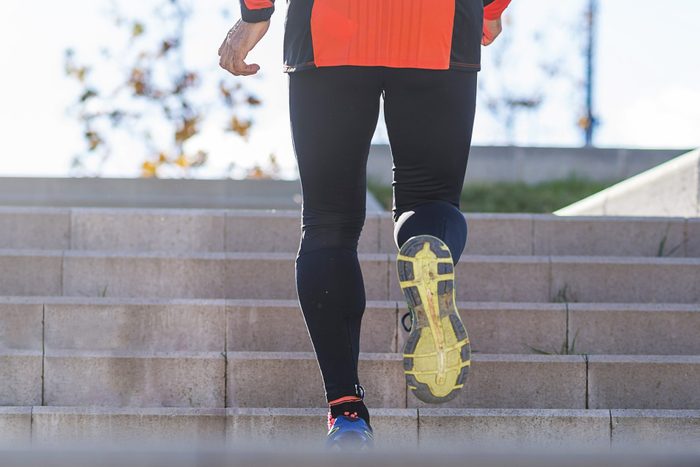
Aerobic movement
While aerobic exercises are typically more associated with heart health and general fitness, impact-based aerobics also help stimulate bone growth and improve bone density, says Lalitha McSorley, lead physical therapist and owner of Brentwood Physical Therapy Calgary. And if you’re just getting started with a fitness routine, they’re a great way to get started as you work your way to weight-bearing and higher-impact exercises. Walking and jogging are two examples, but she particularly recommends dancing and stair climbing, as these exercises can improve balance, coordination, and general fitness as well.
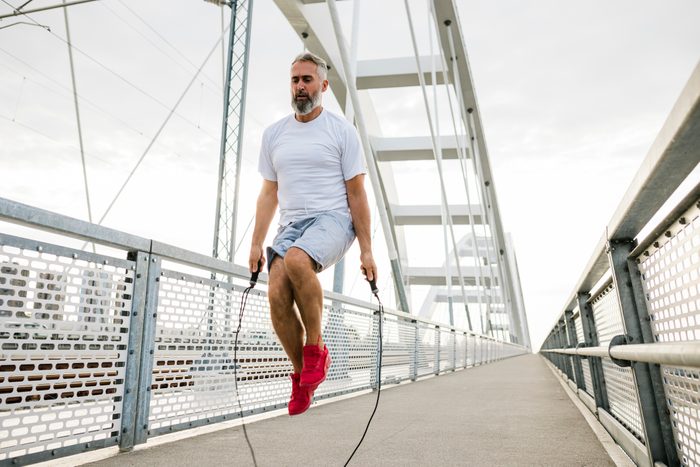
Impact exercises
Exercises that involve jumping and stomping seriously strengthen our bones because we’re absorbing the impact load throughout our system due to their multi-directional movement, Dr. Buress says. These include exercises like jumping rope, jump squats, jumping jacks, burpees, and box jumps. And like resistance training, you can progressively add weights to these movements to continue improving bone density (while gaining some major muscle strength).
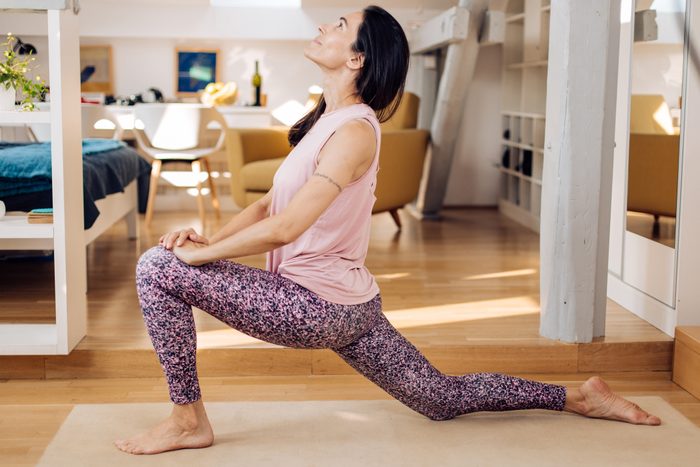
What exercises should you avoid if you have osteoporosis?
People with osteoporosis (particularly more advanced cases) should avoid types of exercises that put excessive stress on the bones, increasing their risk of fractures, McSorley says. High-impact exercises, while excellent for improving bone density, can put too much stress on your system if you start with too much too soon. If you’re trying to reverse your osteoporosis, it’s a good idea to work with a fitness professional who can modify the movements as needed to prevent injuries.
While they’re not necessarily no-go’s, McSorley says that exercises that involve twisting or bending can put a lot of pressure on the spine—so they’re not recommended for people with severe osteoporosis. The same goes for certain yoga poses, like backbends or any other positions that put excessive stress on your joints and bones.
Still, in most cases, these types of exercises can also be modified to reduce pressure on your skeletal system.
Follow The Healthy on Facebook, Instagram, and Twitter. Keep reading:

